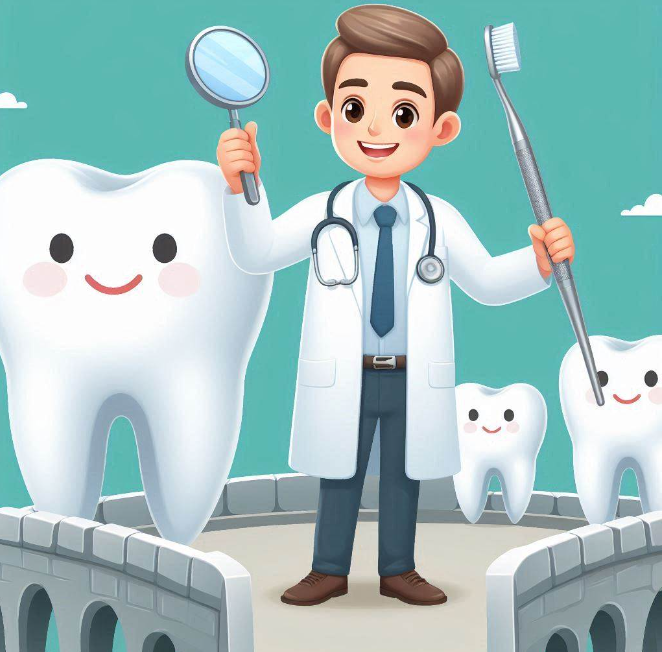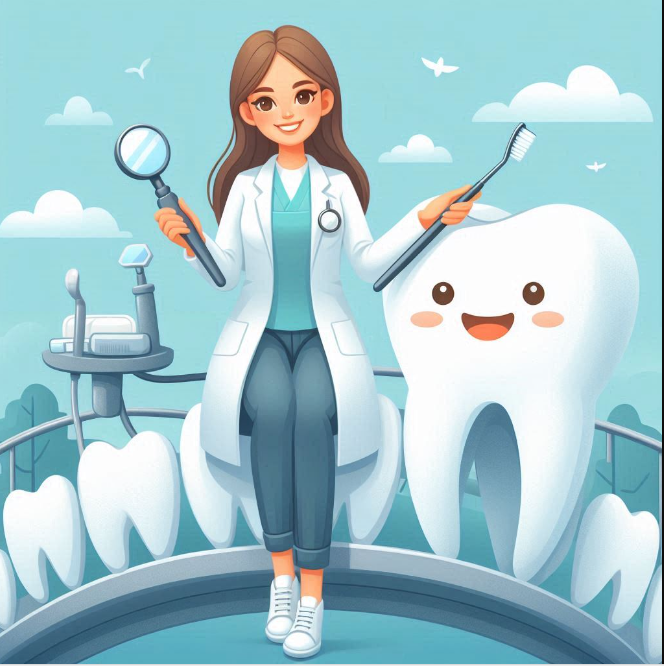Despite being a crucial component of general health, dental health is sometimes disregarded until issues develop. Cavities are one of the most prevalent dental problems that patients encounter. This site seeks to give readers a thorough understanding of cavities—what they are, how they form, and the most effective strategies to treat and prevent them. We will examine the science underlying cavities, the elements that lead to their development, and the contemporary treatments available.
What is a Cavity?
A cavity is a damaged area on the hard surface of your teeth that turns into tiny holes or openings. It is also referred to as dental decay or caries. A number of things contribute to this damage, such as oral bacteria, frequent snacking, use of sugary beverages, and inadequate tooth brushing. One of the most prevalent medical conditions worldwide, cavities can strike anyone at any age.
The Science Behind Cavities
The process that leads to the formation of cavities begins with the demineralization of tooth enamel. Numerous bacteria, some helpful and some potentially hazardous, are found in the mouth. Acids are produced as a consequence of the dangerous bacteria feeding on the carbohydrates in food and beverages that you ingest. The enamel on your teeth is the hard outer layer that can be eroded by these acids. Acid can erode a tooth’s surface over time, leaving a cavity.
There are multiple stages in the creation of a cavity.
- Demineralization
Minerals in the enamel are being removed by the acids that bacteria create. When combined with fluoride treatments and good oral hygiene, the damage is currently reversible.
- Enamel Decay
A cavity will result from the enamel’s eventual breakdown if demineralization is allowed to continue. Although there is no way to reverse this disease, dental Cavity intervention can stop its progression.
- Dentin Decay
The cavity may spread from the enamel to the layer of dentin underneath. Compared to enamel, dentin is softer and decays more quickly. This stage frequently results in pain and sensitivity.
- Damage to the pulp
If decay is not treated, it may spread to the pulp, which is the tooth’s innermost layer and contains blood vessels and nerves. In addition to causing excruciating agony, this can result in an abscess, a dangerous infection that needs to be treated right away.

Reasons for Cavities
It’s essential to comprehend the causes of cavities in order to prevent them. Cavities arise as a result of several factors.
- Inadequate Dental Care
Plaque can accumulate on your teeth if you don’t regularly brush and floss. Bacterial plaque is a sticky film that accumulates on your teeth and gums. It can become tartar, which is more difficult to remove and can cause cavities, if left unchecked.
- Diet High in Sugars and Starches
Regularly consuming starchy and sugary foods and drinks feeds the oral flora. Acids are produced as a result, which may damage your enamel. Candy, drink, pastries, and even some fruits and juices are frequently found to be the guilty parties.
- Parched Mouth
Saliva is essential for removing food particles and neutralizing acids. Your risk of cavities may increase if you have little saliva, which is frequently brought on by certain drugs, illnesses, or ageing.
- Location and Structure of Teeth
Some teeth are more prone to cavities than others. Particularly vulnerable teeth are molars and premolars because they have nooks and crevices where food particles might become lodged. Furthermore, cleaning teeth that are crowded may be more difficult.
- Too Little Fluoride
Fluoride strengthens teeth’s defense against acid erosion, which helps prevent cavities. Even early degradation can be reversed by it. Cavities can occur more frequently if fluoride, which is frequently present in toothpaste, mouthwash, and drinking water, is lacking.
- Age
Cavities are more common in older people and children. Youngsters frequently struggle to maintain good oral hygiene, and elderly people may have receding gums that allow plaque to reach the tooth roots.
Symptoms of Cavities
Early detection of cavity symptoms can result in timely treatment and limit additional harm. Typical signs and symptoms include,
- A toothache or an unforeseen pain
- Intolerance for hot, cold, or sweet meals and beverages
- Obvious fissures or cavities in your teeth
- Discoloration on a tooth’s surface that is brown, black, or white
- Experiencing pain when chewing down
It is imperative that you see your dentist for an assessment if you encounter any of these symptoms.
Preventions of cavities
Making wise food choices and practicing proper dental hygiene are two key factors in preventing cavities. Here are a few successful tactics.
- Frequent use of brushes and floss
To get food particles and plaque out of the spaces between your teeth and beneath your gum line, floss every day and brush your teeth with fluoride toothpaste at least twice a day.
- Apply fluoride
Make use of fluoridated products, such as mouthwash and toothpaste. If you are a high-risk patient for cavities, your dentist may also suggest fluoride treatments.
- A nutritious diet
Eat fewer starchy and sugary foods and drinks. Choose a diet high in fruits, vegetables, whole grains, lean proteins, and balance. Sip lots of water, particularly if it’s fluoridated.
- Regular Dental examinations
See your dentist on a regular basis for examinations and cleanings. Plaque and tartar that you are unable to remove at home might be removed by professional cleaners. Frequent exams can assist in detecting cavities early on, when treatment is less complicated.
- Dental Sealants
Think about dental sealants, a layer of defense put on the rear teeth’s chewing surfaces. By preventing food particles and bacteria from entering the nooks and crevices, sealants help prevent cavities.
- Chewing Sugar-Free Gum
Chewing sugar-free gum after a meal helps stimulate saliva production, which can neutralize acids and help wash away food particles.
Treatment of Cavities
Depending on the extent of the decay, your dentist may recommend one of the following treatments if you get a cavity.
- Fluoride Treatments
Fluoride treatments can help rebuild your teeth’s enamel and sometimes even reverse the damage caused by early-stage cavities. These treatments, which come in gel, foam, or varnish form, have a high fluoride concentration.
- Fillings
Fillings are the most popular course of treatment when a cavity has penetrated through the enamel. After the deteriorated material is removed, amalgam, composite resin, or gold are used to fill the cavity.
- Crowns
A crown could be required for teeth with more severe deterioration or teeth that are weaker. A custom-made crown is placed over the remaining tooth to restore its size, shape, and function after the decaying section of the tooth is removed.
- Root Canals
A root canal can be necessary if the degeneration has progressed to the pulp. The tooth’s interior is cleansed and sealed, the diseased pulp is extracted, and a crown is frequently affixed to the tooth to provide protection.
- Tooth Extractions
It can be necessary to extract the tooth in extreme circumstances where it is too damaged to be repaired. This may leave a gap that needs to be filled with a denture, bridge, or dental implant.

The Use of Technology in Cavity Treatment
Dental technological advancements have greatly enhanced cavity diagnosis, prevention, and treatment. Here are some contemporary inventions.
- Digital Photo
Accurate diagnosis and early cavity detection are made possible by the detailed images that digital X-rays and intraoral cameras provide of your teeth and gums. When compared to conventional X-rays, these technologies also lessen radiation exposure.
- Laser Dentistry
Cavities can be found and treated with lasers. Laser instruments can be used to precisely remove damaged tissue, frequently without the need for anesthesia, and can detect decaying areas before they become noticeable to the unaided eye.
- Biomimetic Materials
For crowns and fillings, new materials that closely resemble teeth’s inherent characteristics are being created. With the ability to fuse with the original tooth structure more successfully, these materials can produce restorations that are more durable and robust.
- Antibacterial Treatments
Treatments that can specifically target the germs that cause tooth decay are still being researched. By lowering the number of bacteria in the mouth, these treatments hope to stop cavities from developing.
In summary
Cavities are a common dental problem that can affect people of all ages, but they can be avoided. You may greatly lower your risk by being aware of the signs and symptoms of cavities, practicing proper dental hygiene, and making wise food decisions. Modern dentistry procedures combined with routine exams can efficiently treat cavities and maintain oral health. The treatment and prevention of cavities appear to have a bright future ahead of them, with novel approaches to maintaining the health and brightness of your teeth.




